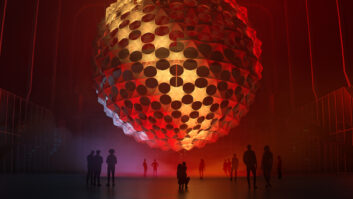I freely admit that I didn’t understand the drive behind 7.1 when people started talking about it almost a decade ago. I understood the appeal, with a Side Right and a Side Left to go with Rear Right and Rear Left, bringing a more immersive overall experience. But I couldn’t see where it was headed on the consumer front. Outside of high-end home theaters, would the average viewer really upgrade amps and put side speakers in the living room? I was making the assumption that all developments in surround technology, from early Dolby Pro Logic through 5.1 and on into the future, had a consumer endgame in mind. Maybe that is no longer the case, and maybe I was looking at it in the wrong way. Perhaps home entertainment and exhibition are proceeding along parallel but separate paths when it comes to surround playback.
There’s no doubt that 7.1 developers do have the consumer in mind, though as content delivery and viewership is increasingly taking place on laptops, tablets and mobile devices, the advances in playback systems may end up being more about headphone simulation rather than free-standing speakers. When Dolby showed up at NAB last year spotlighting its alliances with Dell and Nokia, you could almost see where the real money in licensing is headed. Certainly those devices can be plugged into high-end home systems, but if you take a look around any airport, commuter train or office building, you can see that viewing habits are changing, and it’s becoming much more of a headphone world. Yes, simulation can be a dirty word, but you can’t ignore it. And they’ll still sell new speakers.
Meanwhile, the exhibition world seems to be moving toward “showcasing,” boosting ticket sales by providing a high-quality, high-impact shared experience of seeing a film that you can’t get at home. Just as re-recording mixers are getting comfortable with and enamored of the creative possibilities behind 7.1, manufacturers are looking ahead and exploring 11.1 and 13.1, with real-world products already being introduced. Compared to the upgrade demands on theater owners in the conversion to digital cinema, the cost and complexity of building out more surround channels can be seen as relatively minor. And while their reputation for spending money on B-chain audio upgrades is less than stellar, theater owners know that they have to keep upping the ante, in picture and sound, in order to keep filling the seats. It’s safe to say that in the future we will be listening to 11.1 playback in premium theaters. But are manufacturers and developers counting on 11.1 in the home?
Cynics argue that 5.1 is just fine, and that the impetus for 7.1 is that the consumer electronics industry needs to push a new generation of receivers and players and speakers. But adopters point out that 5.1 digital debuted in the early 1990s and there hasn’t been a truly significant surround upgrade since, while picture over the same period had jumped light years forward, from cameras to projection to digital delivery. Audio needs to advance, the theory goes, and 7.1 works.
You’ll get no argument here. I’m just not sure where I’m going to fit those side speakers.







